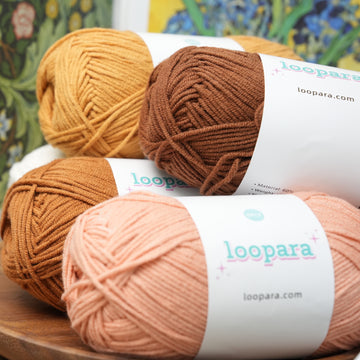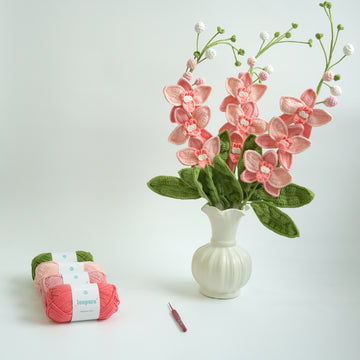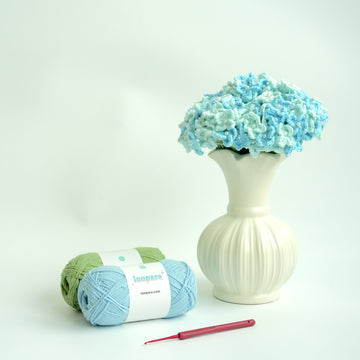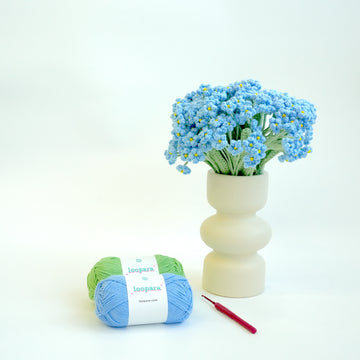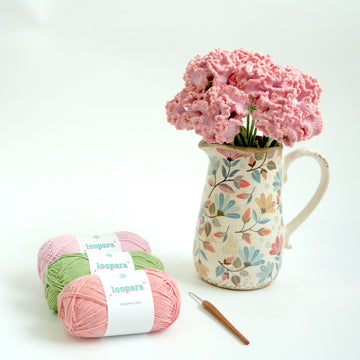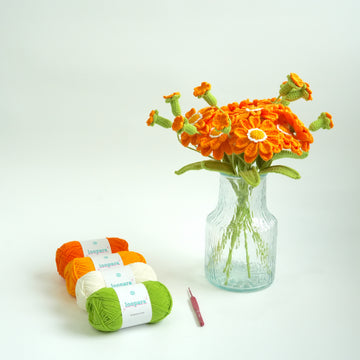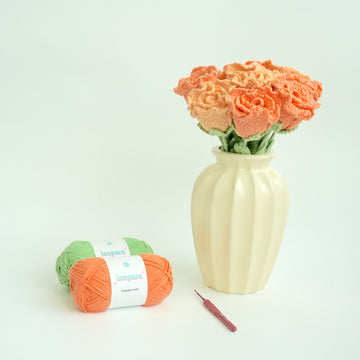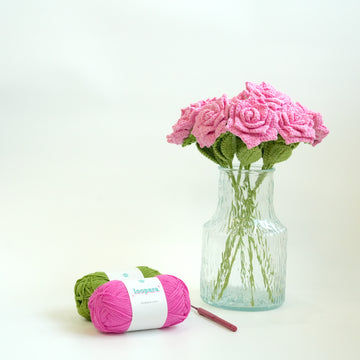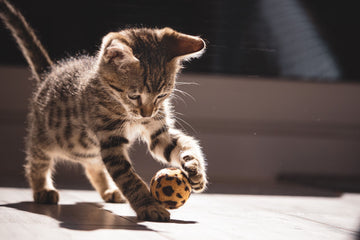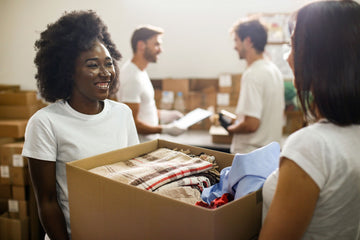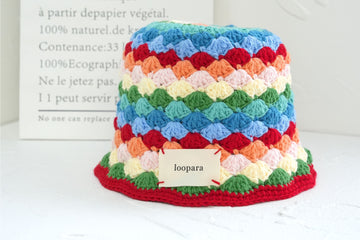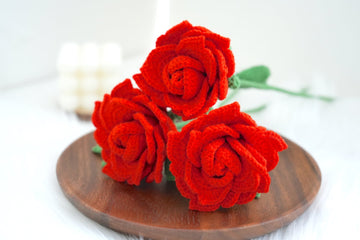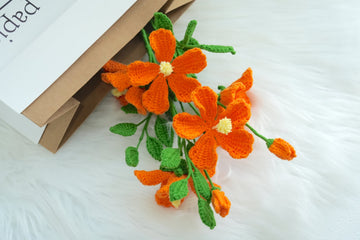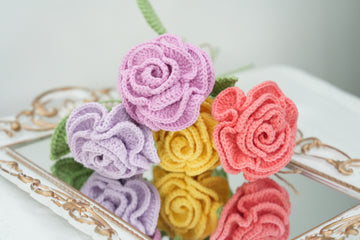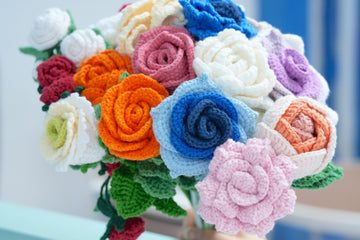You’ll come across lots of new terms when you learn a new craft – and some of them are pretty weird! So what is frogging in crochet?
We’ll give you a clue: it’s something you’ll need to learn about almost as soon as you start. And it’s going to be a really useful technique.
Have we whetted your appetite?! Then read on to find out everything you need to know about frogging.
What does frogging mean in crochet
Frogging is a term that’s used in both crochet and knitting. It simply means ripping out your stitches. So why is that called frogging?
The answer is that when you do it, you “rip it, rip it” – like the sound a frog makes. It’s an informal term, so you won’t see it used in crochet patterns. But it’s widely used, so it’s a good way to sound like a crochet expert!
The purpose of frogging
But why would you want to undo all those stitches you’ve lovingly created?
There are a number of different reasons:
- to correct a mistake
- to adjust a pattern
- to reuse the yarn.
Let’s take a look at these in more detail.
1. Frogging to correct a mistake
By far the most common reason to frog is that you’ve noticed you’ve made a mistake. It happens to us all – even the most experienced crocheters! Frogging means you can quickly go back to the point before you went wrong and restart from there.
A mistake might be something as simple as missing a stitch, or you might notice variations in your gauge. That’s especially likely when you’re just starting out and getting comfortable with your technique.
Gauge is more important for some projects than others. But if you’re crocheting a garment, it’s essential to get the size right. Stitches that are too tight or too loose will give you a finished article that’s too small or too big.
Whatever you’re unhappy with, frogging let’s you go back and it put it right.
2. Frogging to adjust a pattern
There’s a recommended approach to working with a crochet pattern, and it starts with making a gauge swatch. That will show you how your chosen hook and yarn work together, allow you to check the gauge, and generally see how the different stitches will look.
That’s the theory, and most of the time it works very well. But what if you’ve dived straight in, and then found you wanted to change part of the pattern? Or maybe you’re experimenting with creating your own pattern and have come up with a new idea part-way through.
Either way, frogging will allow you to remove stitches you don’t like and swap them for others as you go.
3. Frogging to reclaim yarn
One of the great things about crochet is that it’s a craft that doesn’t require lots of expensive equipment. In fact, your major ongoing outlay will be your yarn. So if you have a crocheted piece you no longer want, reclaiming the yarn from it makes a lot of sense.
Any crocheted or knitted article can be a great source of yarn. Check out charity shops, yard sales and flea markets for items made with yarn you like the look of.
You may even have your own items you want to harvest the yarn from. Perhaps you started a project then lost enthusiasm. Or you’ve made an item that’s outlived its usefulness. Frogging means you can use the yarn for a whole new purpose.
And don’t worry if you find the yarn is kinked after you’ve frogged. That’s natural, and washing or steaming it will get rid of the kink. If you prefer, you can crochet with it as it is, then wash or steam the finished article.

How to frog in crochet
So you’ve decided you’re going to frog your crochet. How do you go about doing it?
It’s usually super-easy. Just remove your hook and gently pull on the end of the yarn you were working from. This will unravel your stitches one by one.
If you want to frog o a specific point to correct a mistake, count the rows to make sure you don’t go back too far. Alternatively, use a stitch marker to identify the spot to finish frogging. When you’ve got to that point, just put your hook back in and continue to crochet.
If you want to unravel the whole piece, of course, you can be a little more vigorous with your yarn pulling! Just take out the hook and pull on the thread until the whole thing has unwound.
Using a swift or wool winder will allow you to wrap the yarn straight back into a ball. That will avoid any knots or tangles.
A winder is an especially good idea if you’re frogging an item of colorwork – in other words, one that uses lots of different shades of yarn. Winding up each color separately will avoid you getting to the end, then having to spend ages sorting out a multicolored mess!
Problems with frogging
So far, this all sounds pretty simple – and it is. But now and again you might run into problems as you frog. These generally relate to two issues:
- the type of yarn being frogged
- the type of stitches being frogged.
1. Frogging and yarn type
Yarns that have a fuzzier texture tend to be trickier to frog. That’s because the fibers can mesh together, making it difficult or even impossible to return them to a single thread.
Mohair and alpaca are notorious for this. That’s a shame, because they’re also beautiful and expensive fibers where frogging an unwanted item could save you a lot of money.
Wool can be challenging to frog too. And if it’s been washed hot and felted, you can pretty much forget about it. The fibers will be too matted to come apart again.
Heavier weight yarns, like roving, can have the same problem.
But if you want to frog a fluffy or heavy yarn, don’t despair! There are some tips and techniques that can help.
- Be patient. Try not to pull too hard on the yarn. That’s likely to just make any knots tighter.
- If you find the yarn knots, hold onto the top of the last stitch and gently pull on the working thread. Pull upwards first. If that doesn’t work, pull down firmly, then up again. That will often be enough to deal with the knot and let you carry on frogging.
- If you still can’t release the knot, give it a controlled tug. If the last step hasn’t worked, hold onto the top of the last stitch then pull the working thread sharply upwards until it releases. Make sure you hold the top of the last stitch as you do this, or the knot will just get tighter.
- Frog in sections. Three or four inches at a time works well. Give each section a tug before you start to frog it. That will help ease the fibers apart.
- Wind the reclaimed yarn as you go. That will avoid knots in the loose yarn.
2. Frogging and stitch type
All the basic crochet stitches – single and double crochet, chain stitch and so on – will frog well. But if the fabric uses unusual stitches, they can be trickier to unravel.
Waistcoat stitches are a good example. They’re very tight and dense. Other potentially problematic stitches include double crochet vs and double crochet fans.
And if they’ve been made with a fluffier or heavy yarn, it will be more difficult again.
The key here is patience – and a bit of good luck! Go slowly, and stretch each section of the fabric before you start to frog it.
Frogging in crochet and knitting
Both crocheters and knitters frog, and it means the same thing. But whereas in crochet frogging is really the only way to undo your stitches, in knitting you have another option.
Knitters can also “tink”. This is another play on words – it’s simply the word “knit” backwards. When you tink, you use the knitting needles to undo each stitch, one at a time. It’s a much gentler approach.
In contrast, when they frog, knitters rip out whole rows of stitches by hand. That’s a lot quicker than tinking, so it’s a better option for correcting a mistake a few rows back.
The only risk is that it can be easy to get over-excited and rip out more stitches than intended! For that reason, knitters will often use what are called “lifelines” when frogging.
These are pieces of yarn threaded through a row of stitches. They’re used to mark the place where the frogging will stop.
Round-up: what is frogging in crochet?
Frogging in crochet means to rip out your stitches. It gets its name from the process – you “rip it, rip it”, like the sound a frog makes!
It’s a great way to correct mistakes, adjust patterns as you go, and reclaim yarn. And as long as you’re patient and gentle, it’s usually fairly easy to do.
Thicker, fuzzier yarns and tighter stitches can be harder work. But by taking your time and working in sections, you’ll generally get there in the end.


